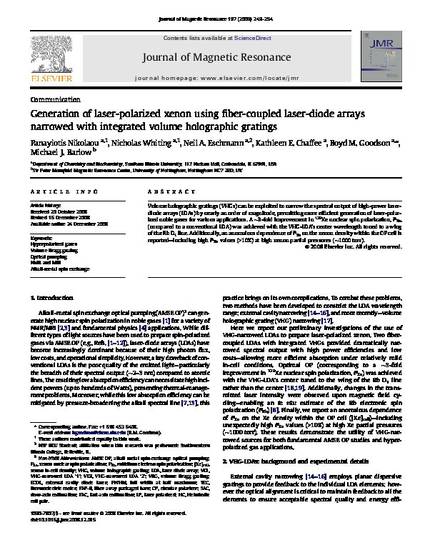
Article
Generation of Laser-Polarized Xenon using Fiber-Coupled Laser-Diode Arrays Narrowed with Integrated Volume Holographic Gratings
Journal of Magnetic Resonance
(2008)
Abstract
Volume holographic gratings (VHGs) can be exploited to narrow the spectral output of high-power laserdiode arrays (LDAs) by nearly an order of magnitude, permitting more efficient generation of laser-polarized noble gases for various applications. A ~3-fold improvement in 129Xe nuclear spin polarization, PXe, (compared to a conventional LDA) was achieved with the VHG-LDA’s center wavelength tuned to a wing of the Rb D1 line. Additionally, an anomalous dependence of PXe on the xenon density within the OP cell is reported—including high PXe values (>10%) at high xenon partial pressures (~1000 torr).
Disciplines
Publication Date
2008
DOI
10.1016/j.jmr.2008.12.015
Citation Information
Panayiotis Nikolaou, Nicholas Whiting, Neil A Eschmann, Kathleen E Chaffee, et al.. "Generation of Laser-Polarized Xenon using Fiber-Coupled Laser-Diode Arrays Narrowed with Integrated Volume Holographic Gratings" Journal of Magnetic Resonance Vol. 197 (2008) p. 249 - 254 Available at: http://works.bepress.com/nicholas-whiting/11/
